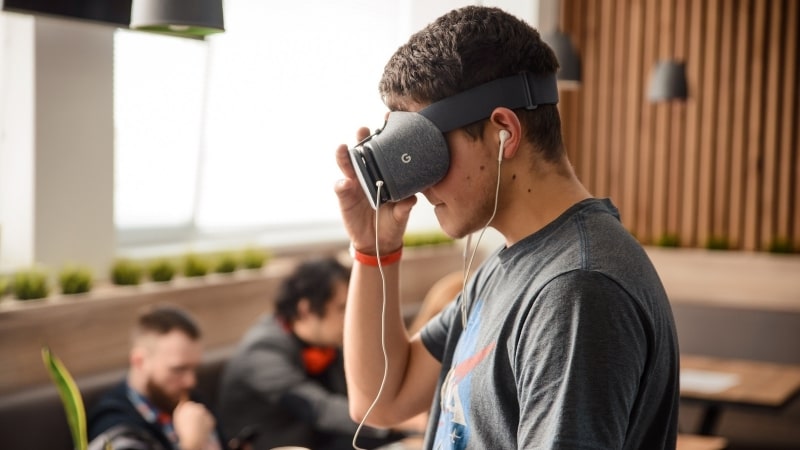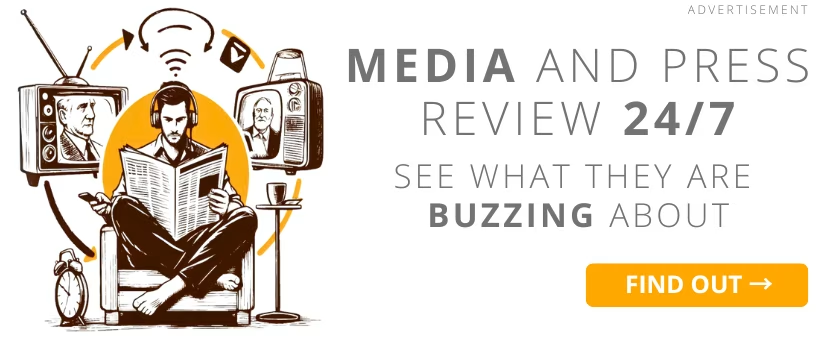 Photo: DataArt
Photo: DataArtThis year will see further integration of new technologies, entertainment, and social media, DataArt experts predict. A key factor will be the development of 5G networks, enabling a new level of connectivity with instant access to content anytime and anywhere. This technology is expected to bolster an industry already moving toward on-demand services, potentially equating subscription revenues with advertising revenues - even in areas traditionally dominated by ads.
Personalization Will Be Key
This trend will drive the exponential growth of the value of intellectual property in media, music, and sports. While industry giants like Netflix, Amazon, Google, Facebook, and Apple will maintain their dominance, other players will need to carve out niches with well-defined products, personalized microservices, and unique offerings. This challenge may lead to increased competition or market consolidation.
The competition for market share will intensify, with technology serving as the critical tool for success. Personalization of content, as demonstrated by Netflix, will be crucial. For example, Bloomberg reported in October that Netflix`s new season of "Black Mirror" would allow viewers to decide on the storyline or ending of each episode - a concept borrowed from video games that could soon become a staple on the "silver screen."
Personalization vs. Compliance
Challenges related to data security and privacy regulations will complicate this battle. Personalization can only thrive within legal boundaries and users` willingness to share information. While technology expands the possibilities for personalization, regulations may impose limitations. Compliance becomes even more challenging with new laws that not only change legal frameworks but also impact trust between companies and consumers.
Those who overcome these challenges will be able to focus on intelligent data collection, analysis, and visualization - key factors for success in content creation, distribution, and monetization.
AI, VR, AR
Artificial intelligence is likely to play a significant role in this transformation. AI will enhance personalized advertising, content recommendations, and even content creation. Virtual assistants, combining analytical and communication skills, are emerging as promising tools for creating more personalized and human-like interactions.
Technologies like virtual and augmented reality, along with 360-degree images and videos, will further personalize experiences by enabling consumers to create virtual environments from scratch. VR and AR are already making their way into entertainment, sports, journalism, and education.
Shifting Revenue Structures
A shift in the revenue structure of the industry will be another indicator of this evolution. Historically, two-thirds of revenues came from hardware. However, as technology becomes more advanced and accessible, software is poised to take a larger share of growth. Augmented reality technologies are set to outpace virtual reality, making AR the dominant segment in the near future.
COMMERCIAL BREAK
New articles in section Media industry
Advertising market 2025. Poland, Europe and the World
Marcin Grządka
The global advertising market is growing by 8.8% in 2025 and will reach a value of 1.14 trillion dollars. The industry result in Europe records slightly lower dynamics, at the level of 5.8%. In this comparison, Poland performs clearly above the average. We will record an increase of 8.9% this year and a value of 18.56 billion PLN - estimates WPP Media in the annual report "This Year Next Year".
The print media market 2025. Three global trends
Krzysztof Fiedorek
The market value is 359.53 billion dollars, yet the erosion is visible to the naked eye. The decline for newspapers will amount to -2.3 percent. Despite this, print retains strength: it generates 76 percent of subscription revenues and enjoys 82 percent consumer trust. The future of the industry is defined by hybrid strategies and niche specialization.
Journalism in the age of AI. Why people prefer humans over machines
Krzysztof Fiedorek
Only 12% of people accept news created solely by AI, while 62% prefer those written by humans. At the same time, only 19% notice labels indicating the use of artificial intelligence, while younger audiences ask AI to explain the content to them. These are the findings of the Reuters Institute report on artificial intelligence in media.
See articles on a similar topic:
Future of Public Media. Who Will Be Data Ethicists and VR Designers?
KFi
How does the future of work in media look? Here are professions that do not yet exist but will soon become essential. The report "Future Jobs at PSM: Competencies and Professions for the Media of Tomorrow," prepared by the European Broadcasting Union (EBU) and Rai Ufficio Studi, outlines key changes awaiting the public media sector in the coming years.
Selfish Trap: A New Social Influence Technique
Krzysztof Fiedorek
Three psychologists from SWPS University have described a social influence method suggesting people are more willing to complete a task if it highlights a quality important to them, such as loyalty, intelligence, or rationality.
Artificial Intelligence and Digital Skills. The Future of the Job Market is Here
KFi
The world faces the challenge of digital transformation, and technological skills have become a gateway to career success. How do Europeans evaluate their abilities, and which industries are leading the way? A recent report by Pracuj.pl reveals which skills open doors to better careers and why AI is the future of work.
Why do we believe fakes? Science reveals the psychology of virals
KFi
Why do emotions grab more attention than evidence, and why can a fake authority overshadow scientific data? Researchers from Warsaw University of Technology, Jagiellonian University, and SWPS University in Poland sought the answers. Here are their findings.





























